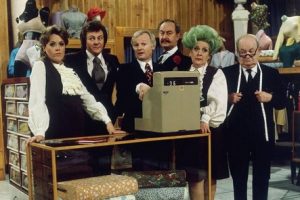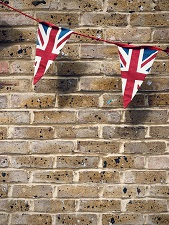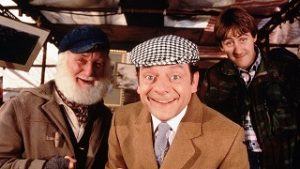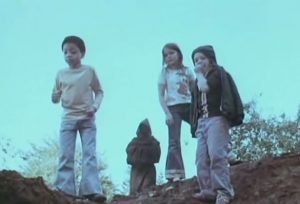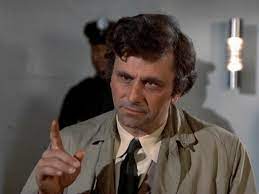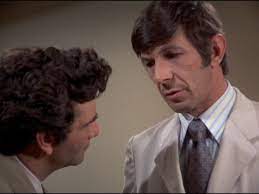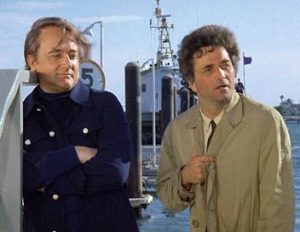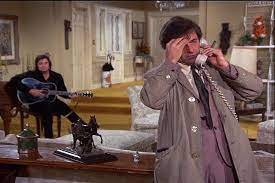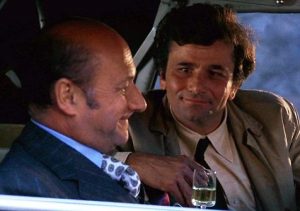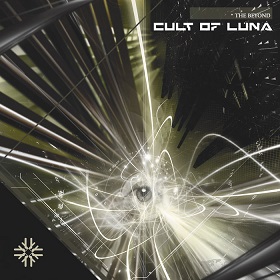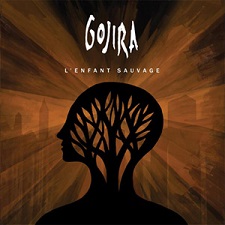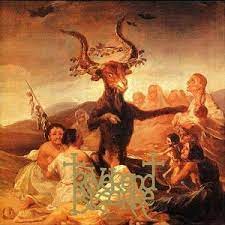
From unsplash.com / © Nadine Marfurt
I seem to have spent a lot of time recently living in the past, which is no doubt due to the lack of anything happening in the present. And that, of course, is because of the ongoing and seemingly never-ending Covid-19 pandemic. Since August 20th, Sri Lanka, the country I’m currently resident in, has been in its third period of lockdown. When it was announced, my partner and I had just ended a state of self-imposed lockdown, for one of our friends was diagnosed with Covid-19 at the start of August and we’d had to self-isolate. So, basically, we’ve seen little apart from the inside of our flat for the past two months.
Anyway, the following entry is a little stroll down memory lane that I originally posted on this blog in 2015. While it looks back (fairly) fondly on an adventure I had in 1983, what revived my memories of the adventure was a disturbing article about Switzerland that I’d just discovered on the BBC news website.
For two months in the late spring and early summer of 1983 I worked on a farm in the Swiss municipality of Niederweningen, which is a 35-minute train ride out of Zurich. I can safely say that in terms of sheer, hard, physical work, I’ve done no job like this before or since.
At the time, I was in the middle of taking a year out between the end of high school and the start of college. As far as I remember, nobody else in my school-year did this. Those who intended to go to college did so in the autumn of 1982, a few months after they’d left school. Everybody around me, including my parents, seemed to think I was insane for delaying my entry to college by 16 months and spending the intervening period doing loopy things like working on a farm in rural Switzerland. Nowadays of course, nearly four decades later, you’re considered insane, and lacking in initiative and employability, if you enter college and you haven’t taken a year out, or a gap-year as it’s known in modern parlance. (At least, that’s how it was before the Covid-19 pandemic and presumably how it’ll be again after the pandemic.)
In 1982 I’d discovered an agency called Vacation Work International, which for a small fee arranged paid working holidays in Switzerland. Switzerland wasn’t top of my list of places to visit but Vacation Work accepted people from the age of 17 upwards. I was 17 at the time and other foreign-job agencies I’d tried had turned me down because, due to visa regulations, they could only take on people who were 18 or older. In October 1982, Vacation Work fitted me up with a month-long job as a grape-picker in a vineyard near Lausanne in French-speaking western Switzerland. This was a tough (and wet – those Swiss wine-producers had a very rainy grape harvest to deal with in 1982) but tolerable job. So, after spending some time travelling in central Europe and working with the Community Service Volunteers in the English Midlands, I thought I’d contact Vacation Work again and give something else on their Swiss brochure a go. This time I plumped for a two-month package where I’d work as a farmhand.
One thing this job did immediately was rid me of the assumption that everyone in Switzerland wore a smart suit and earned pots of money working in a bank. The farming family whom Vacation Work attached me to were not wealthy; certainly not by the standards of any farmer I knew back in the UK (and my Dad is one).
Their house was plain but serviceable, but certain things I’d assumed would be a feature of any household in Western Europe, however rich or poor, such as a television set, were absent. One basic commodity that seemed to be lacking was a decent strip of flypaper because, although the house was reasonably clean, its dining table was always plagued by swarms of big, impudent flies.
Their farmstead possessed a tractor, a trailer and one or two other bits of machinery, but nothing like what even a modest British farm would be equipped with. When the farmer, Hugo, wanted to bale some hay, he had to arrange for the use of a baler that seemed to be shared among a number of farms in the valley. And there were no machines for spraying or weeding crops. Those chores had to be done by someone with a heavy tank of weed-killer strapped onto their back or by someone wielding a hoe, monotonously, all day long, up and down the furrows of a field. Similarly, such devices as front-end or back-end loaders were considered an unaffordable luxury. For shifting things like dung or loose hay, the shovel and the pitchfork were the order of the day. During my two months there, such basic tools were rarely out of my hands.
My abiding memory from those two months is of the daily schedule. Hugo would usually come knocking at my door at 5.30 in the morning and after a hurried breakfast both of us would be outside, ready for action, at 6.00. We’d have an hour’s break at lunchtime. We’d spend the first half that lunch-hour eating and then Hugo would give me a pitying look and suggest, “Jan…” – neither Hugo nor his family could ever get their tongues around the correct /ǝın/ pronunciation of my name – “…eine halbe Stunde.” During this free half-hour, I’d usually doze off in my room and wake up 20 or 25 minutes later with a headache and a rotten taste in my mouth that suggested I’d just been chewing a dead frog.
At some point in the early evening there’d be another meal, but the work usually continued until 8.00 or 9.00 PM. During a busy period, like when we were hay-making, we didn’t clock off until after 10.00. This was the routine six days a week. Only Sundays were free. I calculated I must be doing 70 to 80 hours of physical labour each week. I’d grown up on a farm, and indeed the previous year I’d spent a busy summer working on my uncle’s farm in Ireland. But I hadn’t done anything on the scale of this.

© schweizerdeutsch-lernen.ch
That said, I did quite enjoy myself. I got on well with Hugo and his family were civil to me, although because I was equipped only with the basic German I’d learnt at school and as they spoke the robust – some would say impenetrable – dialect of German known as Schweizerdeutsch, communication was often difficult. At the end of 1983, I received a nice Christmas card and letter from Hugo and his family, which had been written in English by one of their children who was learning the language as school. It wasn’t very comprehensible and I wondered if I’d sounded as strange to them when I’d spoken German.
The family were also kind enough at the end of my two-month service to present me with a going-away gift: a bottle of illicitly-homemade kirsche. This bottle of kirsche lasted for the next two years, into 1985. It was so strong that it could be supped only in minute quantities. A couple of times I sneakily gave glasses of it to college acquaintances who liked to boast about their drinking prowess and, soon after, enjoyed the spectacle of them falling unconscious.
Pleasant too was the scenery at Niederweningen. It wasn’t mountainous but, half-farmed, half forested, it was gorgeous in a sedate, pastoral way. And I formed a friendship with another Vacation Work person who’d been assigned to a neighbouring farm, Rebecca Macnaughton. Thanks to the miracle of the Internet, we’ve kept in touch to this very day. Actually, no matter how long and how hard I worked, it never seemed to stop me from accompanying my Vacation Work colleague down the road to the local pub for a beer after I’d finally finished for the day.
One evening, we tried exploring a different road and happened across a small restaurant that was run, somewhat unexpected, by a well-travelled and very interesting Sri Lankan guy. In fact, he was the first Sri Lankan I’d ever met and I never imagined that, later in my life, I’d spend seven years living in his home country. Anyway, he described how, previously, he’d worked in Zurich with some young Swiss heroin addicts. And suddenly another of my assumptions about Switzerland, about how it was a bastion of order, decency and law-abidingness, had been turned on its head.
One other positive thing about the experience was how physically fit I felt afterwards. Nowadays, with my body wracked by arthritic aches and pains and my waistline fighting a losing battle against a beer-belly, I look at photographs taken of me after I’d arrived home and can hardly believe how athletic I looked then. Indeed, one of the things I did after that was to spend a fortnight tramping around the Lake District and I seem to remember bounding about those Cumbrian fells like a mountain gazelle.
For my Swiss farm-work I was paid a modest wage, but I was never sure if that wage came out of Hugo’s pocket or if it was provided under some Swiss farming subsidy scheme. From what I could gather, the people provided by Vacation Work International were just one input in a system that saw lots of foreign people working cheaply on those modest-sized, modest-resourced farms. Hugo told me how one farmhand who’d worked for him previously was an African bloke. He’d also employed someone, at some point, from the Faroes Islands. Hugo and the Faroese guy had got along so well that the latter still phoned him for a chat from time to time, from his home in the North Atlantic.
Mind you, the annual presence of foreign farmhands didn’t seem to improve Hugo or his neighbours’ knowledge of the outside world. I recall one lunchtime having an argument with him and one of his neighbours about where Albania was. I was the only one who maintained that it was in Europe. Eventually, one of Hugo’s kids’ school atlases was dug out and consulted and, yes, it transpired that I was correct.

From wikipedia.org / © Roland zh
I’ve written nostalgically about my days on a Swiss farm, but I have to admit that what rekindled my memories of them and inspired me to write this blog-entry was something altogether darker. Whilst browsing through the online back-pages of the BBC News website magazine, I happened across an article about a phenomenon that the Swiss authorities had until recently kept quiet about. The article is called SWITZERLAND’S SHAME – THE CHILDREN USED AS CHEAP FARM LABOUR and is written by Kavita Puri.
This describes the old Swiss practice of taking orphaned children, or the children of unmarried parents, or children from poor backgrounds, and using them as ‘contract children’; as ultra-cheap labour, often on farms, where they were vulnerable to exploitation and abuse. Part of the reason for this was simple economics. Prior to World War II Switzerland wasn’t a wealthy country and a low-costing workforce for its agricultural sector had to be found somewhere. However, it was driven too by an unforgiving attitude towards poverty. As one historian explains: “It was like a kind of punishment. Being poor was not recognised as a social problem, it was individual failure.”
The phenomenon of contract children – which over the decades is believed to have involved hundreds of thousands of Swiss youngsters – began in the 1850s and continued for the next century. It didn’t peter out until the 1960s and 1970s, when “farming became mechanised” and “the need for child labour vanished.” Also, “(w)omen got the vote in 1971 and attitudes towards the poor and single mothers moved on.” Even so, Puri’s article mentions one case of agricultural child labour that occurred as late as 1979, just four years before I arrived there for my 70-to-80 hours of weekly hard labour. What a sobering thought.


